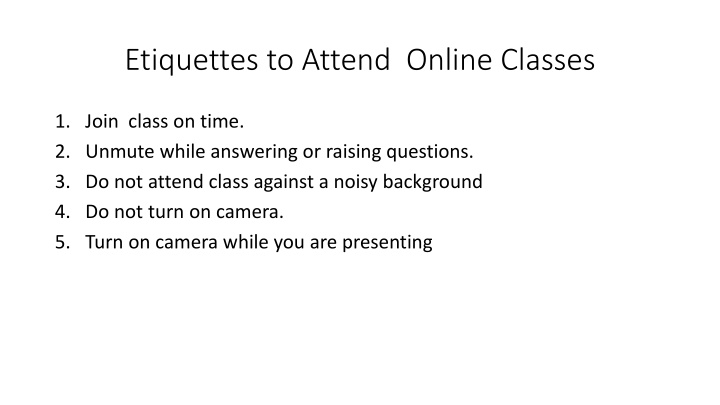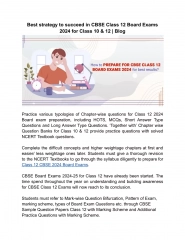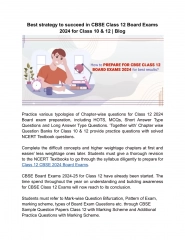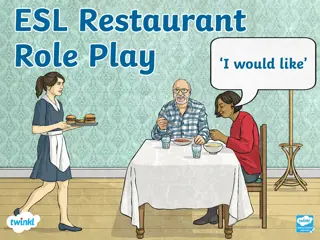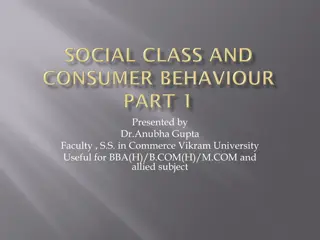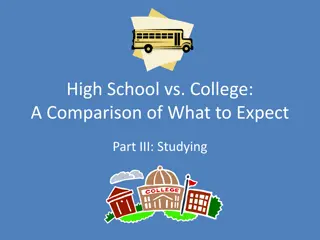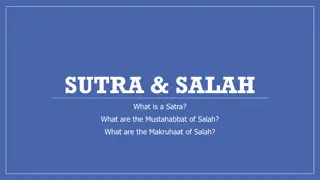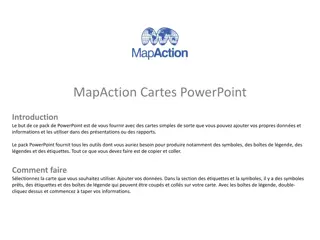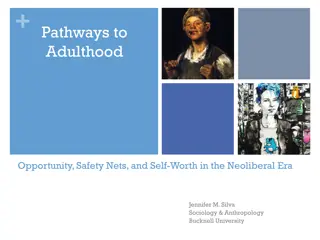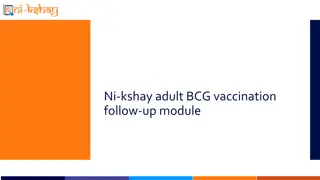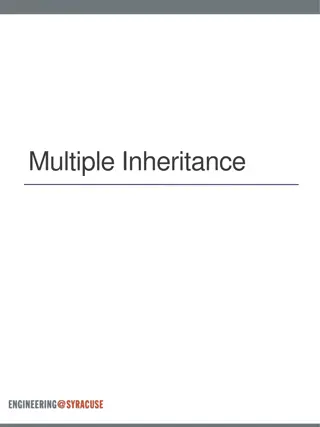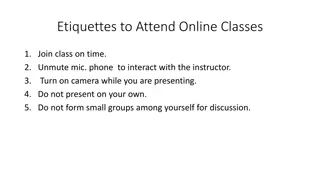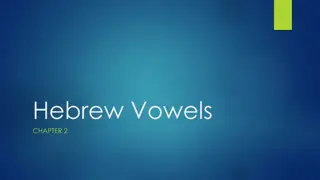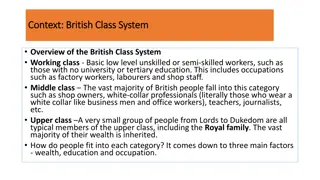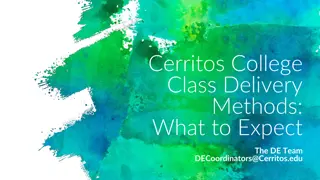Online Class Etiquettes to Follow
Proper online class etiquette is essential for a conducive learning environment. Join classes on time, unmute when speaking, avoid noisy backgrounds, and use cameras appropriately. Remember to start with a topic sentence in your paragraphs and support it with relevant sentences for better coherence and unity.
Download Presentation

Please find below an Image/Link to download the presentation.
The content on the website is provided AS IS for your information and personal use only. It may not be sold, licensed, or shared on other websites without obtaining consent from the author.If you encounter any issues during the download, it is possible that the publisher has removed the file from their server.
You are allowed to download the files provided on this website for personal or commercial use, subject to the condition that they are used lawfully. All files are the property of their respective owners.
The content on the website is provided AS IS for your information and personal use only. It may not be sold, licensed, or shared on other websites without obtaining consent from the author.
E N D
Presentation Transcript
Etiquettes to Attend Online Classes 1. Join class on time. 2. Unmute while answering or raising questions. 3. Do not attend class against a noisy background 4. Do not turn on camera. 5. Turn on camera while you are presenting
Communicative English Course Code: HSS-S101 Deepti Agarwal Instructor
Paragraph Contains more than one sentence. Starts from a new line. Are indented or numbered. (Whatever format you use, be consistent.) Start with a topic sentence.( perfect paragraph ) Have support sentences in the middle. Ends with a concluding sentence. Unity and coherence Covers one topic from beginning until end.
Topic Sentence A topic sentence is the first sentence of the body paragraph. The topic sentence introduces the topic of the paragraph. A good topic sentence will be broad enough to allow for explication but narrow enough that it does not require a paragraph that is too long. Topic : The Effect of Social Media on Indian Youth 1st: Social media has distracted the Indian youth. 2nd: Social media has opened several opportunities for today s youth.
What is the main Idea? Native people in early North America liked to play games. 1.(supporting sentence) Their favorite games were played with a stick and a ball, like lacrosse. 2.In lacrosse the rule is that you can't touch the ball with your hands. 3.You catch the ball in a net on the end of a stick and use the stick to throw the ball. A. Their favorite games were played with a stick and a ball, like lacrosse. B. Native people in early North America liked to play games. c. You catch the ball in a net on the end of a stick and use the stick to throw the ball.
Not all plants grow in the same way. 1.Some plants grow and reproduce in one year and are called annuals. 2.Some plants grow and reproduce in two years and are called biennials. 3.Other plants grow and reproduce for many years and are called perennials. a. Other plants grow and reproduce for many years and are called perennials. b. Not all plants grow in the same way. c. Some plants grow and reproduce in one year and are called annuals.
Supporting Sentences The sentences between the topic sentence and the concluding sentence. The supporting sentences support the topic sentence. The Sentences explain and elaborate the point of the paragraph.
Teeth can tell you what kinds of food a mammal eats. Plant eaters (herbivores) like deer have large, flat molars for grinding plants. Animals that eat both plants and meat (omnivores) have strong canines and molars for tearing and grinding foods. Animals that are meat eaters (carnivores) have canine teeth for cutting and tearing. Animals that are meat eaters (carnivores) have canine teeth for cutting and tearing. Animals that eat both plants and meat (omnivores) have strong canines and molars for tearing and grinding foods. Teeth can tell you what kinds of food a mammal eats.
Animals have defenses against being eaten, and so do plants. For example: Plants like milkweed have strong chemicals that can make animals sick. Poison Ivy has oils in its leaves that will give animals an itchy rash. Blackberries have sharp thorns all over the plant. A. Animals have defenses against being eaten, and so do plants. B. Plants like hemlock have strong chemicals that can make animals sick.
Concluding Sentence The concluding sentence is the last sentence in the paragraph. It should succinctly end the paragraph and transition to the next paragraph, if appropriate.
Alex scored 8 points for his baseball team. He struck out 5 players. He hit 2 home runs and drove in 6 more runs. Alex was declared the most Valuable Player of the game. Alex scored 8 points for his baseball team. Alex was declared Most Valuable Player of the game.
Unity, Coherence The ideas in a paragraph should logically fit together. The ideas should flow from one idea to the next. A paragraph should be organized in a way that it builds appropriately. This could be by sequence of ideas or events. Additionally, transitions should be used from one sentence to the next that connect the ideas and concepts.
Martin Luther King Jr. was one of America's most important civil rights leaders. He inspired many with his famous, "I have a dream" speech. He believed in using non-violent methods to achieve his dream of racial integration. He was assassinated at age 39.
Before the Europeans came, women in North America had more power and freedom than women in Europe or Asia. Women owned their own houses. They could get divorced if they wanted to. They didn't lose their children if they did get divorced. Before the Europeans came, women in North America had more power and freedom than women in Europe or Asia. Women owned their own houses.
Adequate Development The paragraph should be well-developed. The reader should not be left wanting more information. The paragraph should include enough evidence to support its topic sentence.
People in early North America ate only wild foods that they could hunt or gather. Inuit people ate a lot of fish and seal meat, and gathered seaweed. Pueblo people ate cactus fruit and pine nuts, and hunted rabbits and birds. Cree people ate fish with wild rice that they gathered in the wetlands around the Great Lakes. People in early North America ate only wild foods that they could hunt or gather. Pueblo people ate cactus fruit and pine nuts, and hunted rabbits and birds.
Transitions Good paragraphs have transitions between preceding and proceeding paragraphs. These transitions are logical and verbal. One paragraph should logically flow to the next. The ideas in a body of work should be organized so each paragraph transitions well to the next. It should not be choppy. Additionally, verbal transitions within and between paragraphs should help the reader move seamlessly through the piece of writing.
SOME USEFUL TRANSITIONS To show addition: again, and, also, besides, equally important, first (second, etc.), further, furthermore, in addition, in the first place, moreover, next, too To give examples: for example, for instance, in fact, specifically, that is, to illustrate To compare: also, in the same manner, likewise, similarly
To summarize or conclude: all in all, in conclusion, in other words, in short, in summary, on the whole, that is, therefore, to sum up To show time: after, afterward, as, as long as, as soon as, at last, before, during, earlier, finally, formerly, immediately, later, meanwhile, next, since, shortly, subsequently, then, thereafter, until, when, while
To show place or direction: above, below, beyond, close, elsewhere, farther on, here, nearby, opposite, to the left (north, etc.) To indicate logical relationship: accordingly, as a result, because, consequently, for this reason, hence, if, otherwise, since, so, then, therefore, thus
To contrast: although, and yet, at the same time, but, despite, even though, however, in contrast, in spite of, nevertheless, on the contrary, on the other hand, still, though, yet.
Thomas Alva Edison is remembered because of the huge number of things he invented which are still used today such as the light bulb, the storage battery, and Motion pictures (movies) were another of his inventions.
Summary Begin with a topic sentence. Develop that topic well with evidence, examples, and explanations. Conclude the paragraph appropriately..
Rearrange the sentences to form a paragraph 1. He is called so because he led India to freedom from British rule. 2.The first cause that he took up was of an indigo farmer of Champaran, Bihar. 3.Mahatma Gandhi is called the Father of the Nation. 4.He started fighting for India s freedom after he returned from South Africa.
Answer Mahatma Gandhi is called the Father of the Nation. He is called so because he led India to freedom from British rule. He started fighting for India s freedom after he returned from South Africa. The first cause that he took up was of an indigo farmer of Champaran, Bihar.
